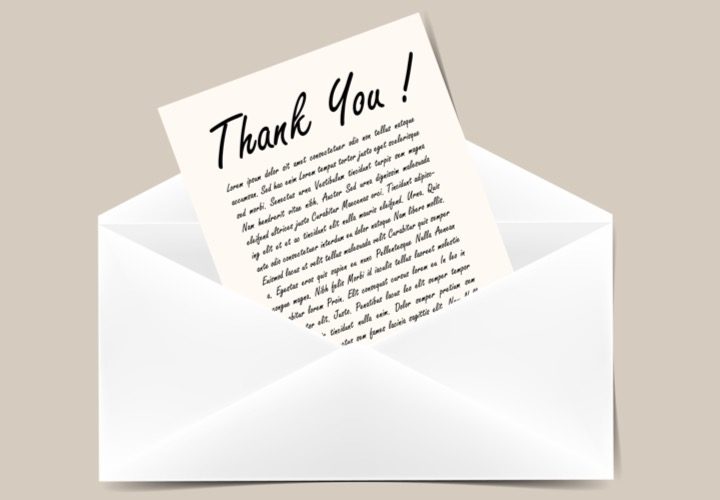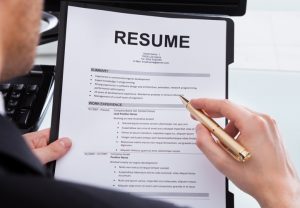
Congratulations — you’ve landed an interview for the job of your dreams, and nailed every single question the interviewer asked you.
Now it’s just time to head home and wait for your phone to ring, right?
Not if you actually want to get the job.
Your next step after leaving the interview should be to send your interviewer a thank-you email. It doesn’t have to be elaborate or poetic, but you need to thank them for taking the time to speak with you.
Why Should You Write a Thank-You Email?
A survey of employers by Career Builder found 22 percent of employers are less likely to offer a job to an interviewee if they don’t receive a thank-you note.
Eighty-six percent of those same employers feel a missing thank-you note shows a lack of ambition and follow-through.
Sending a thank-you note is another opportunity to sell yourself and your skills and to set yourself apart from the pack.
It shows how keen you are for this job and can tilt the balance in your favor if it’s a close competition between a few candidates.
What Should You Include in Your Thank-You Email?
Now that you know why you should write an email to your interviewer, what should you include? A few things to keep in mind might be:
- Your interviewer’s name — Please make sure that you address the hiring manager by their name, and triple-check that you’ve spelled it correctly. It’s not good to start an email with “Hi, Interviewer.”
- The position you interviewed for — They might have interviewed a number of candidates for different roles. Make it easy for them to recall you quickly.
- The company’s name — This is a pitfall to avoid, especially if you’re using a template letter to send your thank-you notes.
- What you can offer the company — Write about what you can do for them, not what they can do for you.
- A link to your Resume (or LinkedIn Profile)— Even if they have a copy of your resume on file, providing a link to a digital copy of that information can make it easier for your interviewer to find you. If you’ve created a public resume on Resumonk, you can share that link in your email’s signature.
- A memorable detail from your interview — Add something in your email that will set you apart from the rest of the people that your interviewer may have spoken to that day. This could be a reference to a tricky question you answered, a debate that you and the interviewer had, or something unrelated that you spoke about, like a shared hometown or a favorite sports team.
When Should You Send Your Thank-You Email?
Don’t wait more than 24 hours to send your thank-you email.
Your best bet is to send it soon after your interview. Not only does a quick follow-up look good in the recruiter’s eye, but all the details are fresh in your mind, so you’re less likely to make any missteps with names or titles.
What Should You Leave out of Your Thank-You Email?
There are a few things you should definitely not include in your thank-you email:
- Your expectations — Unless they’ve already offered you the job, don’t ask about salaries, bonuses or parking spaces. Save those questions for your in-person conversations.
- Typos — Nothing looks worse than typos or glaring grammar mistakes in your thank-you email. Proofread, proofread and then proofread again. Then, have someone else proofread it, just for good measure.
- Text-speak — Don’t end your sentences with smiley faces or use shorthand like “LOL” etc.
- Deadlines or ultimatums — Don’t tell your interviewer you expect to hear back by a certain date or time in this particular email. Remember you are sending this soon after your interview and they will need some time before arriving at a final decision. Don’t rush it at this moment.
Thank-You Email Template
If you’re not a strong writer, or just aren’t sure where to start, here’s a quick template you can easily customize to help you write the perfect thank-you email for your interviewer.
Your subject line should always start with “Thank you,” and if you want to add a bit more detail, include the title of the position that you were interviewing for, such as:
Thank you — content writer interview
Start with a simple greeting and introduction. Write your interviewer’s name as they introduced themselves — use their first name if they did during the interview. Otherwise, use their last name and the appropriate honorific, such as Mr./Ms./Mrs., etc.
Dear [Interviewer’s Name],
Thank you for taking the time to speak with me today about the [position name] opportunity with [Company Name].
I enjoyed speaking with you about [detail to remind interviewer of who you are].
I’m very excited about the possibility of joining the [Company Name] team and can’t wait to get to work doing [what you bring to the company — marketing, client generation, etc.].
I look forward to hearing from you soon to learn about the next steps in your hiring process. If you need any more information from me, please don’t hesitate to contact me.
Best regards,
[Your Name]
Resume: resumonk.com/your-name
Then, just proofread until you’re sure there are no mistakes, and hit send. It’s as simple as that.
Make this extra bit of effort and stand out from all other applicants. All the best for your job hunt!
p.s. Check out how Resumonk’s AI Resume Builder, with features such as AI Rewrites, AI Suggestions, and easy imports from LinkedIn or PDF/DOCX files, helps you create elegant resumes. Start your free trial today!



